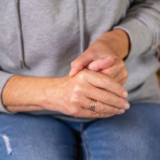READ OUR BLOG

Musculoskeletal Australia (or MSK) is the consumer organisation working with, and advocating on behalf of, people with arthritis, osteoporosis, back pain, gout and over 150 other musculoskeletal conditions.
Useful Links
- Contact us
- Get to know MSK
- Our Partners
- Downloads
- Advertising opportunities
- Terms & conditions
- Privacy policy
Key Conditions
Recent Posts
April 8, 2024
April 8, 2024
March 14, 2024
Copyright by Musculoskeletal Australia 2023. All rights reserved













